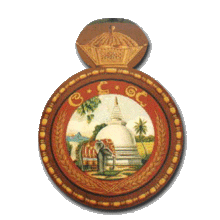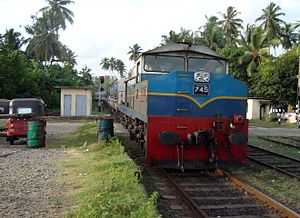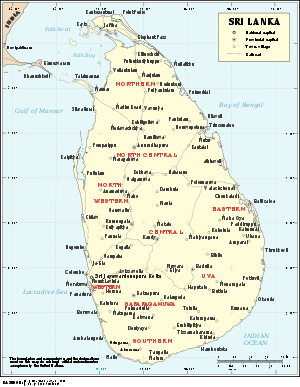Coastal Line (Sri Lanka)
| Coastal Line | ||||||||||||||||||||||||||||||||||||||||||||||||||||||||||||||||||||||||||||||||||||||||||||||||||||||||||||||||||||||||||||||||||||||||||||||||||||||||||||||||||||||||||||||||||||||||||||||||||||||||||||||||||||||||||||||||||||||||||||||||||||||||||||||||||||||||||||||||||||||||||||||||||||||||||||||||||||||||||||||||||||||||||||||||||||||||||||||||||||||||||||||||||||||||||||||||||||||||||||||||||||||||||||||||||||||||||||||||||||||||||||||||||||||||||||||||||||||||||||||
|---|---|---|---|---|---|---|---|---|---|---|---|---|---|---|---|---|---|---|---|---|---|---|---|---|---|---|---|---|---|---|---|---|---|---|---|---|---|---|---|---|---|---|---|---|---|---|---|---|---|---|---|---|---|---|---|---|---|---|---|---|---|---|---|---|---|---|---|---|---|---|---|---|---|---|---|---|---|---|---|---|---|---|---|---|---|---|---|---|---|---|---|---|---|---|---|---|---|---|---|---|---|---|---|---|---|---|---|---|---|---|---|---|---|---|---|---|---|---|---|---|---|---|---|---|---|---|---|---|---|---|---|---|---|---|---|---|---|---|---|---|---|---|---|---|---|---|---|---|---|---|---|---|---|---|---|---|---|---|---|---|---|---|---|---|---|---|---|---|---|---|---|---|---|---|---|---|---|---|---|---|---|---|---|---|---|---|---|---|---|---|---|---|---|---|---|---|---|---|---|---|---|---|---|---|---|---|---|---|---|---|---|---|---|---|---|---|---|---|---|---|---|---|---|---|---|---|---|---|---|---|---|---|---|---|---|---|---|---|---|---|---|---|---|---|---|---|---|---|---|---|---|---|---|---|---|---|---|---|---|---|---|---|---|---|---|---|---|---|---|---|---|---|---|---|---|---|---|---|---|---|---|---|---|---|---|---|---|---|---|---|---|---|---|---|---|---|---|---|---|---|---|---|---|---|---|---|---|---|---|---|---|---|---|---|---|---|---|---|---|---|---|---|---|---|---|---|---|---|---|---|---|---|---|---|---|---|---|---|---|---|---|---|---|---|---|---|---|---|---|---|---|---|---|---|---|---|---|---|---|---|---|---|---|---|---|---|---|---|---|---|---|---|---|---|---|---|---|---|---|---|---|---|---|---|---|---|---|---|---|---|---|---|---|---|---|---|---|---|---|---|---|---|---|---|---|---|---|---|---|---|---|---|---|---|---|---|---|---|---|---|---|---|---|---|---|---|---|---|---|---|---|---|---|---|---|---|---|---|---|---|---|---|---|---|---|---|---|---|---|---|---|---|---|---|---|---|---|---|---|---|---|---|---|---|---|---|---|---|---|---|---|---|---|---|---|---|---|---|
 | ||||||||||||||||||||||||||||||||||||||||||||||||||||||||||||||||||||||||||||||||||||||||||||||||||||||||||||||||||||||||||||||||||||||||||||||||||||||||||||||||||||||||||||||||||||||||||||||||||||||||||||||||||||||||||||||||||||||||||||||||||||||||||||||||||||||||||||||||||||||||||||||||||||||||||||||||||||||||||||||||||||||||||||||||||||||||||||||||||||||||||||||||||||||||||||||||||||||||||||||||||||||||||||||||||||||||||||||||||||||||||||||||||||||||||||||||||||||||||||||
|
Intercity Train Arriving Aluthgama Station | ||||||||||||||||||||||||||||||||||||||||||||||||||||||||||||||||||||||||||||||||||||||||||||||||||||||||||||||||||||||||||||||||||||||||||||||||||||||||||||||||||||||||||||||||||||||||||||||||||||||||||||||||||||||||||||||||||||||||||||||||||||||||||||||||||||||||||||||||||||||||||||||||||||||||||||||||||||||||||||||||||||||||||||||||||||||||||||||||||||||||||||||||||||||||||||||||||||||||||||||||||||||||||||||||||||||||||||||||||||||||||||||||||||||||||||||||||||||||||||||
| Overview | ||||||||||||||||||||||||||||||||||||||||||||||||||||||||||||||||||||||||||||||||||||||||||||||||||||||||||||||||||||||||||||||||||||||||||||||||||||||||||||||||||||||||||||||||||||||||||||||||||||||||||||||||||||||||||||||||||||||||||||||||||||||||||||||||||||||||||||||||||||||||||||||||||||||||||||||||||||||||||||||||||||||||||||||||||||||||||||||||||||||||||||||||||||||||||||||||||||||||||||||||||||||||||||||||||||||||||||||||||||||||||||||||||||||||||||||||||||||||||||||
| Type | Intercity rail | |||||||||||||||||||||||||||||||||||||||||||||||||||||||||||||||||||||||||||||||||||||||||||||||||||||||||||||||||||||||||||||||||||||||||||||||||||||||||||||||||||||||||||||||||||||||||||||||||||||||||||||||||||||||||||||||||||||||||||||||||||||||||||||||||||||||||||||||||||||||||||||||||||||||||||||||||||||||||||||||||||||||||||||||||||||||||||||||||||||||||||||||||||||||||||||||||||||||||||||||||||||||||||||||||||||||||||||||||||||||||||||||||||||||||||||||||||||||||||||
| System | Sri Lanka Railways | |||||||||||||||||||||||||||||||||||||||||||||||||||||||||||||||||||||||||||||||||||||||||||||||||||||||||||||||||||||||||||||||||||||||||||||||||||||||||||||||||||||||||||||||||||||||||||||||||||||||||||||||||||||||||||||||||||||||||||||||||||||||||||||||||||||||||||||||||||||||||||||||||||||||||||||||||||||||||||||||||||||||||||||||||||||||||||||||||||||||||||||||||||||||||||||||||||||||||||||||||||||||||||||||||||||||||||||||||||||||||||||||||||||||||||||||||||||||||||||
| Status | Functioning | |||||||||||||||||||||||||||||||||||||||||||||||||||||||||||||||||||||||||||||||||||||||||||||||||||||||||||||||||||||||||||||||||||||||||||||||||||||||||||||||||||||||||||||||||||||||||||||||||||||||||||||||||||||||||||||||||||||||||||||||||||||||||||||||||||||||||||||||||||||||||||||||||||||||||||||||||||||||||||||||||||||||||||||||||||||||||||||||||||||||||||||||||||||||||||||||||||||||||||||||||||||||||||||||||||||||||||||||||||||||||||||||||||||||||||||||||||||||||||||
| Locale | Sri Lanka | |||||||||||||||||||||||||||||||||||||||||||||||||||||||||||||||||||||||||||||||||||||||||||||||||||||||||||||||||||||||||||||||||||||||||||||||||||||||||||||||||||||||||||||||||||||||||||||||||||||||||||||||||||||||||||||||||||||||||||||||||||||||||||||||||||||||||||||||||||||||||||||||||||||||||||||||||||||||||||||||||||||||||||||||||||||||||||||||||||||||||||||||||||||||||||||||||||||||||||||||||||||||||||||||||||||||||||||||||||||||||||||||||||||||||||||||||||||||||||||
| Termini |
Colombo Fort Matara | |||||||||||||||||||||||||||||||||||||||||||||||||||||||||||||||||||||||||||||||||||||||||||||||||||||||||||||||||||||||||||||||||||||||||||||||||||||||||||||||||||||||||||||||||||||||||||||||||||||||||||||||||||||||||||||||||||||||||||||||||||||||||||||||||||||||||||||||||||||||||||||||||||||||||||||||||||||||||||||||||||||||||||||||||||||||||||||||||||||||||||||||||||||||||||||||||||||||||||||||||||||||||||||||||||||||||||||||||||||||||||||||||||||||||||||||||||||||||||||
| Website | www.railway.gov.lk | |||||||||||||||||||||||||||||||||||||||||||||||||||||||||||||||||||||||||||||||||||||||||||||||||||||||||||||||||||||||||||||||||||||||||||||||||||||||||||||||||||||||||||||||||||||||||||||||||||||||||||||||||||||||||||||||||||||||||||||||||||||||||||||||||||||||||||||||||||||||||||||||||||||||||||||||||||||||||||||||||||||||||||||||||||||||||||||||||||||||||||||||||||||||||||||||||||||||||||||||||||||||||||||||||||||||||||||||||||||||||||||||||||||||||||||||||||||||||||||
| Operation | ||||||||||||||||||||||||||||||||||||||||||||||||||||||||||||||||||||||||||||||||||||||||||||||||||||||||||||||||||||||||||||||||||||||||||||||||||||||||||||||||||||||||||||||||||||||||||||||||||||||||||||||||||||||||||||||||||||||||||||||||||||||||||||||||||||||||||||||||||||||||||||||||||||||||||||||||||||||||||||||||||||||||||||||||||||||||||||||||||||||||||||||||||||||||||||||||||||||||||||||||||||||||||||||||||||||||||||||||||||||||||||||||||||||||||||||||||||||||||||||
| Opening | 17 December 1895 | |||||||||||||||||||||||||||||||||||||||||||||||||||||||||||||||||||||||||||||||||||||||||||||||||||||||||||||||||||||||||||||||||||||||||||||||||||||||||||||||||||||||||||||||||||||||||||||||||||||||||||||||||||||||||||||||||||||||||||||||||||||||||||||||||||||||||||||||||||||||||||||||||||||||||||||||||||||||||||||||||||||||||||||||||||||||||||||||||||||||||||||||||||||||||||||||||||||||||||||||||||||||||||||||||||||||||||||||||||||||||||||||||||||||||||||||||||||||||||||
| Owner | Sri Lanka Railways | |||||||||||||||||||||||||||||||||||||||||||||||||||||||||||||||||||||||||||||||||||||||||||||||||||||||||||||||||||||||||||||||||||||||||||||||||||||||||||||||||||||||||||||||||||||||||||||||||||||||||||||||||||||||||||||||||||||||||||||||||||||||||||||||||||||||||||||||||||||||||||||||||||||||||||||||||||||||||||||||||||||||||||||||||||||||||||||||||||||||||||||||||||||||||||||||||||||||||||||||||||||||||||||||||||||||||||||||||||||||||||||||||||||||||||||||||||||||||||||
| Operator(s) | Sri Lanka Railways | |||||||||||||||||||||||||||||||||||||||||||||||||||||||||||||||||||||||||||||||||||||||||||||||||||||||||||||||||||||||||||||||||||||||||||||||||||||||||||||||||||||||||||||||||||||||||||||||||||||||||||||||||||||||||||||||||||||||||||||||||||||||||||||||||||||||||||||||||||||||||||||||||||||||||||||||||||||||||||||||||||||||||||||||||||||||||||||||||||||||||||||||||||||||||||||||||||||||||||||||||||||||||||||||||||||||||||||||||||||||||||||||||||||||||||||||||||||||||||||
| Technical | ||||||||||||||||||||||||||||||||||||||||||||||||||||||||||||||||||||||||||||||||||||||||||||||||||||||||||||||||||||||||||||||||||||||||||||||||||||||||||||||||||||||||||||||||||||||||||||||||||||||||||||||||||||||||||||||||||||||||||||||||||||||||||||||||||||||||||||||||||||||||||||||||||||||||||||||||||||||||||||||||||||||||||||||||||||||||||||||||||||||||||||||||||||||||||||||||||||||||||||||||||||||||||||||||||||||||||||||||||||||||||||||||||||||||||||||||||||||||||||||
| Line length | 157.88 km (98.10 mi) | |||||||||||||||||||||||||||||||||||||||||||||||||||||||||||||||||||||||||||||||||||||||||||||||||||||||||||||||||||||||||||||||||||||||||||||||||||||||||||||||||||||||||||||||||||||||||||||||||||||||||||||||||||||||||||||||||||||||||||||||||||||||||||||||||||||||||||||||||||||||||||||||||||||||||||||||||||||||||||||||||||||||||||||||||||||||||||||||||||||||||||||||||||||||||||||||||||||||||||||||||||||||||||||||||||||||||||||||||||||||||||||||||||||||||||||||||||||||||||||
| No. of tracks |
Double track: Colombo Fort to Panadura Single track: Panadura to Matara | |||||||||||||||||||||||||||||||||||||||||||||||||||||||||||||||||||||||||||||||||||||||||||||||||||||||||||||||||||||||||||||||||||||||||||||||||||||||||||||||||||||||||||||||||||||||||||||||||||||||||||||||||||||||||||||||||||||||||||||||||||||||||||||||||||||||||||||||||||||||||||||||||||||||||||||||||||||||||||||||||||||||||||||||||||||||||||||||||||||||||||||||||||||||||||||||||||||||||||||||||||||||||||||||||||||||||||||||||||||||||||||||||||||||||||||||||||||||||||||
| Track gauge | 1,676 mm (5 ft 6 in) | |||||||||||||||||||||||||||||||||||||||||||||||||||||||||||||||||||||||||||||||||||||||||||||||||||||||||||||||||||||||||||||||||||||||||||||||||||||||||||||||||||||||||||||||||||||||||||||||||||||||||||||||||||||||||||||||||||||||||||||||||||||||||||||||||||||||||||||||||||||||||||||||||||||||||||||||||||||||||||||||||||||||||||||||||||||||||||||||||||||||||||||||||||||||||||||||||||||||||||||||||||||||||||||||||||||||||||||||||||||||||||||||||||||||||||||||||||||||||||||
| Electrification | No | |||||||||||||||||||||||||||||||||||||||||||||||||||||||||||||||||||||||||||||||||||||||||||||||||||||||||||||||||||||||||||||||||||||||||||||||||||||||||||||||||||||||||||||||||||||||||||||||||||||||||||||||||||||||||||||||||||||||||||||||||||||||||||||||||||||||||||||||||||||||||||||||||||||||||||||||||||||||||||||||||||||||||||||||||||||||||||||||||||||||||||||||||||||||||||||||||||||||||||||||||||||||||||||||||||||||||||||||||||||||||||||||||||||||||||||||||||||||||||||
| Operating speed | 100 km/h (62 mph) | |||||||||||||||||||||||||||||||||||||||||||||||||||||||||||||||||||||||||||||||||||||||||||||||||||||||||||||||||||||||||||||||||||||||||||||||||||||||||||||||||||||||||||||||||||||||||||||||||||||||||||||||||||||||||||||||||||||||||||||||||||||||||||||||||||||||||||||||||||||||||||||||||||||||||||||||||||||||||||||||||||||||||||||||||||||||||||||||||||||||||||||||||||||||||||||||||||||||||||||||||||||||||||||||||||||||||||||||||||||||||||||||||||||||||||||||||||||||||||||
| ||||||||||||||||||||||||||||||||||||||||||||||||||||||||||||||||||||||||||||||||||||||||||||||||||||||||||||||||||||||||||||||||||||||||||||||||||||||||||||||||||||||||||||||||||||||||||||||||||||||||||||||||||||||||||||||||||||||||||||||||||||||||||||||||||||||||||||||||||||||||||||||||||||||||||||||||||||||||||||||||||||||||||||||||||||||||||||||||||||||||||||||||||||||||||||||||||||||||||||||||||||||||||||||||||||||||||||||||||||||||||||||||||||||||||||||||||||||||||||||
The Coastal Line (sometimes referred to as the Coast Line or the Southern Line) is a major railway line in Sri Lanka, running between Colombo Fort and Matara, via Galle. Operated by Sri Lanka Railways, the line includes some of the busiest rail services in the country. The line is currently being extended to Beliatta and is proposed to be extended to Kataragama, via Hambantota. With a designed maximum speed of 100 km/h between Kalutara and Matara, and a proposed maximum speed of 120 km/h between Matara and Beliatta,[1] the line is one of the fastest in Sri Lanka.[2]
Route definition
The Coastal line begins at Maradana Station and runs west towards Colombo Fort. It then turns south and runs through much of Colombo parallel to the beaches on the city's west coast, passing many commuter rail stations, such as Slave Island. It passes Panadura before reaching Kalutara. The commuter rail services end as the line continues south along the coast towards Galle.
Galle station is designed as a terminus station. Thus trains have to back out of the station to continue towards Matara. Matara is the current terminus of the Coast Line, though extension is under construction to Hambantota and Kataragama.
History
Construction and launch
This line was the second railway line in Sri Lanka. Construction works started after Colombo-Kandy-Badulla Main Line. On 1st of March 1877 first train up to Panadura was commenced. On 1st of February 1878, trains ran up to Kalutara and one year after that on 1st of February 1879 Wadduwa Station was declared open. On 22 September 1879 inaugural opening of Kalutara North and Kalutara South Stations and ran first train to Kalutara South. On 31 March 1890 line extended to Kalutara South to Aluthgama. Then up to Kosgoda on 8 September 1892 and Kosgoda to Ambalangoda on 15 November 1893. On 7 May 1894 British government completed the construction works to Galle . After nearly a year and half later on 17 December 1895 train services to Matara commenced.
Twentieth-century growth
.jpg)
In the mid-twentieth century, the coastal line experienced many changes to accommodate growing traffic. Galle Station was upgraded with better facilities and modern architecture. Express trains began serving the line, including the now celebrated Ruhunu Kumari. Along with the rest of the railway network, diesel traction replaced steam locomotives on all services.[3]
Tsunami disaster and aftermath
The railway line was severely affected by the 2004 Indian-Ocean Tsunami. A train was swept off the track, killing more than 1500, in the worst rail disaster in history.[4]
.jpg)
Augmentation of Coastal Line in 2011-2012 period
.jpg)
In 2011-2012, the Coastal Line underwent complete reconstruction between Kalutara and Matara, to upgrade the track. The line was upgraded to be able to handle trains at 100 km/h, allowing for shorter journey times and smoother service. The upgrade included replacing the rails and sleepers to ensure smoother and safer operation. The previously 3-hours-and-forty-minute travel time between Colombo and Matara has been reduced to just two hours.[2]
The line is currently being extended to reach Hambantota and Kataragama.[5] The first phase is an extension of the line to Beliatta. Stations will be built along the phase-1 extension at Kekanadura, Babarenda, Wavurukannala and Beliatta.[6] Trains are planned to travel at 120 km/h on the new track.[1]
For the second phase extension between Beliatta and Hambantota, the new railway line is proposed to shift inland, compared to the coastal alignment west of Beliatta. This would protect natural habitat on the coastal belt and minimise damage to property. A feasibility study and an environment impact assessment for the Beliatta to Hambantota and Kataragama phases of construction, connecting Hambantota, Angunakolapelassa, Wetiya Junction; Andarawewa, Mattala and Lunugamvehera, was approved by the Cabinet.[1]
Operators and service providers
Sri Lanka Railways operates passenger services on the Coastal Line.
Rajadhani Express operates a premium service on certain Sri Lanka Railways trains on the Coastal Line, in partnership with Sri Lanka Railways.
Infrastructure
The Coastal Line has a gauge of 1,676 mm (5 ft 6 in) broad gauge.[7]
The Coastal Line is not electrified. Regular services run on diesel power. However, there are plans to electrify the commuter-rail network, within the Colombo metropolitan area. This includes the Coastal-line segment between Colombo Fort and Panadura.[8]
Time Table
Downwards
| Starting Station | Departure Time | Destination Station | Time | Name | Frequency |
|---|---|---|---|---|---|
| Maradana | 04.30 | Panadura | 05.36 | Daily | |
| Maradana | 05.38 | Kalutara South | 07.15 | Daily | |
| Maradana | 05.52 | Panadura | 06.47 | Mon. to Sat. | |
| Maradana | 06.24 | Panadura | 07.19 | Mon. to Fri. | |
| Maradana | 06.30 | Matara | 10.42 | Daily | |
| Maradana | 07.17 | Moratuwa | 08.01 | Mon. to Fri. | |
| Maradana | 07.31 | Panadura | 08.40 | Mon. to Fri. | |
| Maradana | 07.35 | Mount Lavinia | 08.15 | Mon. to Fri. | |
| Maradana | 07.54 | Panadura | 08.51 | Mon. to Fri. | |
| Maradana | 08.06 | Moratuwa | 08.50 | Mon. to Fri. | |
| Maradana | 08.11 | Mount Lavinia | 08.46 | Mon. to Sat. | |
| Maradana | 08.35 | Kalutara South | 10.01 | Daily | |
| Maradana | 09.05 | Kalutara South | 11.17 | Daily | |
| Maradana | 11.10 | Aluthgama | 13.07 | Daily | |
| Maradana | 12.05 | Kalutara South | 13.29 | Mon. to Fri. | |
| Maradana | 13.30 | Panadura | 14.25 | Mon. to Fri. | |
| Maradana | 14.05 | Aluthgama | 16.11 | Daily | |
| Maradana | 14.15 | Matara | 17.48 | Daily | |
| Maradana | 14.30 | Panadura | 15.35 | Daily | |
| Maradana | 15.20 | Panadura | 16.27 | Daily | |
References
- ↑ 1.0 1.1 1.2 Range, Irangika (5 August 2013). "Wheels move on work on Matale-Beliatta track". Daily News. The Associated Newspapers of Ceylon Ltd. Retrieved 4 July 2014.
- ↑ 2.0 2.1 Dissanayake, Ridma (11 April 2012). "Southern railway line re-opens today". Ceylon Daily News. Retrieved 11 September 2012.
- ↑ Perera, B. B. "Rampala regime in the local Railway History". The Island. Retrieved 7 January 2013.
- ↑ "Survivors tell of tsunami train horror". BBC News. 30 December 2004. Retrieved 1 July 2012.
- ↑ "ColomboPage". Construction of Matara-Kataragama railway line in Southern Sri Lanka begins. 6 April 2010.
- ↑ "Matara-Beliatta railway project starts today". adaderana.lk. 28 October 2013. Retrieved 4 July 2014.
- ↑ "The Island". Rampala regime in the local Railway History. 2010-07-19.
- ↑ "Future Plans". Sri Lanka Railways. Retrieved 2012-02-10.
| ||||||||||||||||||||||||||||

